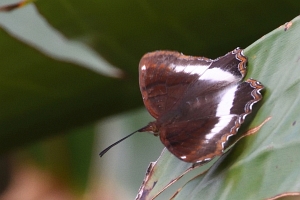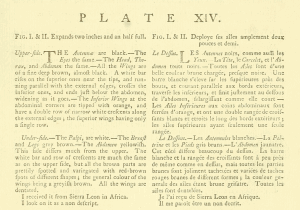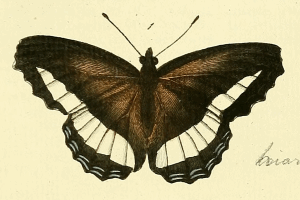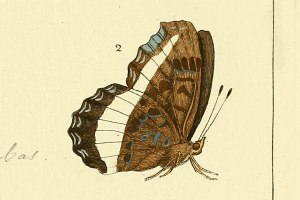Inhalt
1. Lebendfotos
1.1. Falter
1: Südafrika, Eastern Cape, Chintsa East, ca. 50 m, 15. Dezember 2018 (det. & fot.: Peter Ginzinger)Forum
2. Diagnose
2.1. Erstbeschreibung
1-4: Drury (1782: 17, Index, pl. XIV figs. 1-2) [nach Copyright-freien Scans auf www.biodiversitylibrary.org]
3. Weitere Informationen
3.1. Andere Kombinationen
- Papilio hiarbas Drury, 1782 [Originalkombination]
3.2. Synonyme
- Papilio hiarba Fabricius, 1793 [Synonym nach funet.fi]
3.3. Unterarten
- Eurytela hiarbas angustata Lathy, 1901 [Unterart nach funet.fi]
- Eurytela hiarbas lita Rothschild & Jordan, 1903 [Unterart nach funet.fi]
- Eurytela hiarbas abyssinica Rothschild & Jordan, 1903 [Unterart nach funet.fi]
3.4. Faunistik
Nach [Global Biodiversity Information Facility] kommt die Art in Südafrika, Uganda, Malawi, Zentralafrikanische Republik, Äthiopien, Kenia, Simbabwe, Tansania, Ghana, Kamerun, Demokratische Republik Kongo, Mosambik, Gabun, Mali und Sambia vor.
Locus typicus gemäß Erstbeschreibung: Sierra Leon en Afrique.
(Autor: Michel Kettner)
3.5. Literatur
- Erstbeschreibung: Drury, D. (1782): Illustrations of Natural History. Wherein are exhibited Upwards of Two Hundred Figures of Exotic Insects. According to their different Genera; Very few of which have hitherto been figured by any Author, Being engraved and coloured from Nature, with the greatest Accuracy, and under the Author's own Inspection, on Fifty Copper-Plates. With a particular Description of each Insect: Interspersed with Remarks and Reflections of the Nature and Properties of many of them. Vol. III: i-xxvi, 1-76, pl. I-L, Index to the Third Volume [not paginated, 2 pp.]. London.




![Vorkommen in Mali [Global Biodiversity Information Facility]](/res/img/flag/ml.gif)
![Vorkommen in Äthiopien [Global Biodiversity Information Facility]](/res/img/flag/et.gif)
![Vorkommen in Ghana [Global Biodiversity Information Facility]](/res/img/flag/gh.gif)
![Vorkommen in Kamerun [Global Biodiversity Information Facility]](/res/img/flag/cm.gif)
![Vorkommen in der Zentralafrikanischen Republik [Global Biodiversity Information Facility]](/res/img/flag/cf.gif)
![Vorkommen in Gabun [Global Biodiversity Information Facility]](/res/img/flag/ga.gif)
![Vorkommen in der Demokratischen Republik Kongo [Global Biodiversity Information Facility]](/res/img/flag/cd.gif)
![Vorkommen in Uganda [Global Biodiversity Information Facility]](/res/img/flag/ug.gif)
![Vorkommen in Kenia [Global Biodiversity Information Facility]](/res/img/flag/ke.gif)
![Vorkommen in Tansania [Global Biodiversity Information Facility]](/res/img/flag/tz.gif)
![Vorkommen in Sambia [Global Biodiversity Information Facility]](/res/img/flag/zm.gif)
![Vorkommen in Malawi [Global Biodiversity Information Facility]](/res/img/flag/mw.gif)
![Vorkommen in Mosambik [Global Biodiversity Information Facility]](/res/img/flag/mz.gif)
![Vorkommen in Simbabwe [Global Biodiversity Information Facility]](/res/img/flag/zw.gif)
![Vorkommen in Südafrika [Foto im Forum]](/res/img/flag/za.gif)





